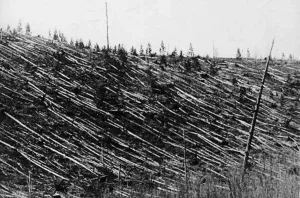Meteors, also known as shooting stars, are celestial objects that enter Earth’s atmosphere at high speeds. When a meteor enters the atmosphere, it encounters immense air resistance due to the friction between the meteor and the air molecules. This friction generates intense heat that causes the outer layers of the meteor to vaporize and glow brightly, creating the spectacular light show we observe from the ground. The phenomenon of meteors burning up in the atmosphere is not just a beautiful spectacle but also a complex interaction of physics and chemistry. To fully appreciate this cosmic ballet, let’s delve deeper into the various factors that govern this process, exploring the composition of meteors, their atmospheric entry dynamics, and the role of speed and angle of entry. By understanding these elements, we gain insight into the fundamental principles that shape the meteors’ fiery demise.
Composition and Structure of Meteors
Most meteors are composed of various metals and rocks such as iron, nickel, and silicate minerals. The composition of a meteor plays a crucial role in determining how it interacts with the atmosphere during entry. Meteors with a higher iron content are more likely to withstand the heat and pressure of atmospheric entry, while those made of more fragile materials may disintegrate more easily.
Types of Meteors
- Stony Meteors (Chondrites): These are the most common type, composed primarily of silicate minerals. Due to their rocky nature, they tend to break apart more easily upon entering the atmosphere.
- Metallic Meteors (Iron): Composed mostly of iron and nickel, these meteors are denser and more resistant to atmospheric entry. They often survive long enough to reach the Earth’s surface as meteorites.
- Stony-Iron Meteors: A combination of metal and rock, these are less common but offer a unique interaction with the atmosphere due to their mixed composition.
Each type of meteor, depending on its composition, presents a unique set of challenges and behaviors as it travels through the Earth’s atmosphere. The different elements and compounds present in meteors contribute to their unique properties and behavior during atmospheric entry, shaping the way they interact with Earth’s atmosphere and the resulting light display.
Atmospheric Entry Dynamics
As a meteor penetrates deeper into the atmosphere, it experiences increasing levels of air resistance and pressure. The intense heat generated by this friction causes the outer layers of the meteor to vaporize rapidly, forming a glowing trail of ionized gas behind it known as a meteor trail or ionization trail.
The Physics of Friction and Heat
When a meteor travels through space, it does so at speeds ranging from 11 to 72 kilometers per second. Upon entering the Earth’s atmosphere, the sudden deceleration due to air resistance causes the meteor’s kinetic energy to convert into heat. This process is similar to the way a spacecraft re-enters the atmosphere, albeit on a much smaller scale.
- Frictional Heating: The friction between the meteor and atmospheric particles generates temperatures that can exceed 1,650 degrees Celsius (3,000 degrees Fahrenheit), which is sufficient to melt and vaporize most materials.
- Plasma Formation: The heat ionizes the surrounding air, creating a plasma sheath around the meteor. This plasma is what causes the bright glow, often visible from the ground as a shooting star.
The formation of the ionization trail is a complex process involving the interaction of the meteor’s composition, speed, and atmospheric conditions, leading to the mesmerizing visual spectacle we witness during meteor showers.
Role of Speed and Angle of Entry
The speed and angle at which a meteor enters the atmosphere are critical factors in determining whether it will burn up or reach the Earth’s surface as a meteorite. Meteors that approach Earth at higher speeds tend to experience more intense heating and are more likely to burn up completely. Additionally, the angle of entry affects the amount of atmospheric resistance the meteor encounters, influencing the heating and vaporization of its outer layers.
Determining the Fate of a Meteor
- Speed: High-speed meteors are more likely to disintegrate due to the increased heat and pressure. For instance, a meteor traveling at 72 km/s will face much more severe conditions than one at 11 km/s.
- Angle of Entry: A shallow angle allows for a longer path through the atmosphere, increasing the chance of disintegration. Conversely, a steep angle may result in the meteor reaching the surface more quickly, potentially as a meteorite.
The interaction between the speed, angle of entry, and atmospheric conditions dictates the fate of the meteor, determining whether it will disintegrate in a dazzling display of light or survive to potentially impact the Earth’s surface as a meteorite.
Historical Impacts and Modern Observations
Throughout history, meteors have captured human imagination and curiosity. From the famous Tunguska event in 1908, which flattened over 2,000 square kilometers of Siberian forest, to the more recent Chelyabinsk meteor in 2013, meteors have demonstrated their potential to impact Earth significantly. These events underscore the importance of understanding meteor dynamics to better predict and potentially mitigate future impacts.
Case Studies
- Tunguska Event: Believed to have been caused by an airburst of a stony meteor, this event released energy equivalent to 15 megatons of TNT, highlighting the destructive potential of meteors.
- Chelyabinsk Meteor: Entering the atmosphere at approximately 19 kilometers per second, this meteor exploded in an airburst, injuring over 1,500 people and causing extensive property damage. Its entry angle and speed contributed to its explosive nature.
Meteor Showers: A Celestial Spectacle
Meteor showers occur when Earth passes through the debris trail left by a comet. Each year, several meteor showers are visible, providing a natural light show for observers around the world.
Popular Meteor Showers
- Perseids: Occurring in August, the Perseids are one of the most popular meteor showers, known for their bright meteors and high activity rate.
- Leonids: Known for producing meteor storms, the Leonids occur in November and are associated with the comet Tempel-Tuttle.
Observing meteor showers can be an awe-inspiring experience, reminding us of the dynamic nature of our solar system.
Practical Tips for Meteor Watching
For those interested in watching meteor showers, here are some practical tips:
- Find a Dark Location: Light pollution can significantly impact your ability to see meteors. Heading to a rural area away from city lights will enhance your viewing experience.
- Check the Weather: Clear skies are essential for meteor watching. Cloud cover can obstruct the view, so it’s best to check the weather forecast in advance.
- Be Patient: Meteor showers can vary in intensity, and it may take some time before you see any meteors. Bring a comfortable chair or blanket and enjoy the night sky.
Conclusion
The burning up of meteors in the atmosphere is a fascinating phenomenon driven by the interaction between these celestial objects and Earth’s atmospheric conditions. Understanding the physics behind this process enhances our knowledge of meteor dynamics and contributes to the study of space science and planetary formation. The study of meteors and their atmospheric entry provides valuable insights into the mechanisms that govern celestial bodies’ interaction with Earth and enriches our understanding of the broader processes shaping our universe.
Through continued observation and study, we can better appreciate the beauty and complexity of meteors, recognizing their role in the cosmic story. Whether observing a meteor shower or studying meteorites that have reached the Earth, there is always more to learn and discover about these incredible celestial wanderers.




